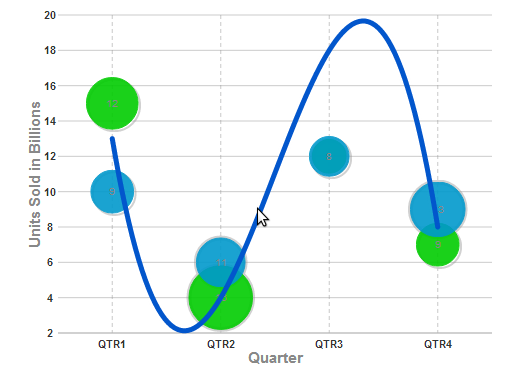Trendlines are used to represent trends in data and to examine problems of prediction. Trendlines are commonly used with price charts or financial charts, but they can also be used with a variety of technical analysis charts such as MACD (moving average convergence/divergence) which is a trading indicator used in technical analysis of stock prices, or RSI (relative strength index) which is a technical indicator used in the analysis of financial markets.
Types of Trendlines
The following table displays the supported FitTypes. Each trend type is drawn based on the calculation formula of its type.
| FitType | Description | Preview |
|---|---|---|
| Polynom | A twisted line that is used when data oscillates. It is useful for analyzing gains and losses over a large data set. | 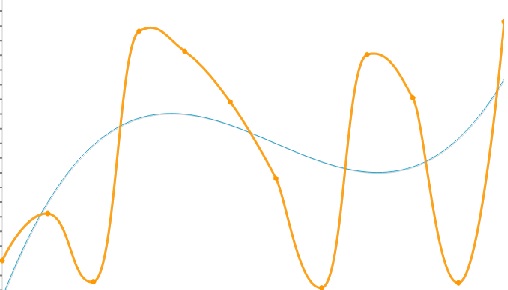 |
| Exponent | A curved line that is convenient to use when data values rise or fall at increasingly higher rates. You cannot create an exponential trendline if your data contains zero or negative values. | 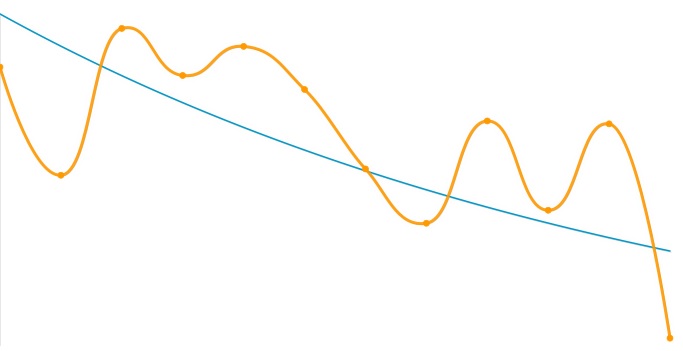 |
| Logarithmic | A best fit curved line used for better visualization of data. Used when the rate of change in the data increases or decreases quickly and then levels out. It can also use positive and negative values. | 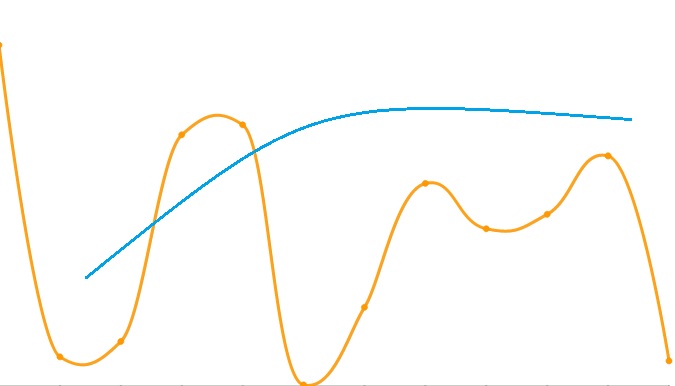 |
| Power | A curved line that is best used with data sets that compare calculation that increase at a peculiar rate. For example, the acceleration of a vehicle at one-second intervals. | 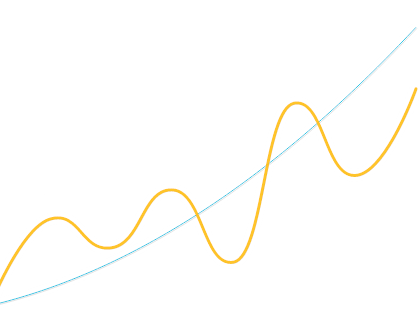 |
| Fourier | A way to display a wave like function as a combination of simple sine waves. It is created by using the fourier series formula. |
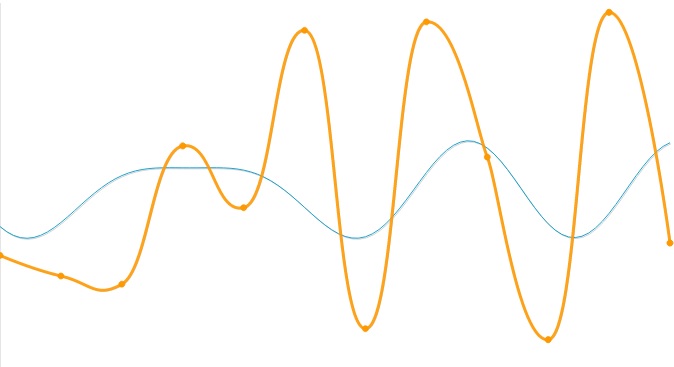 |
| Min X | Takes the minimum value of X from the chart and draws a trendline using it. | 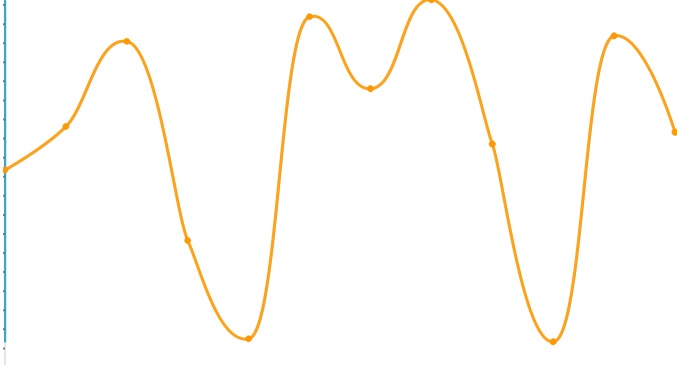 |
| Min Y | Takes the minimum value of Y from the chart and draws a trendline using it | 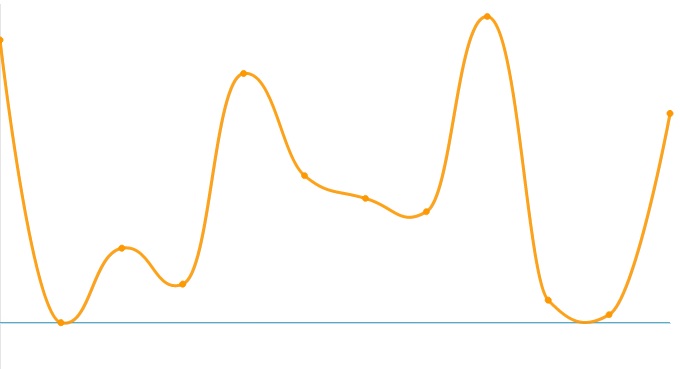 |
| Max X | Takes the maximum value of X from the chart and draws a trendline using it. | 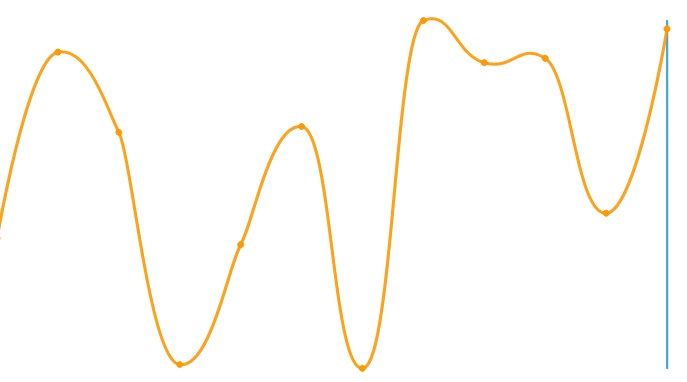 |
| Max Y | Takes the maximum value of Y from the chart and draws a trendline using it. | 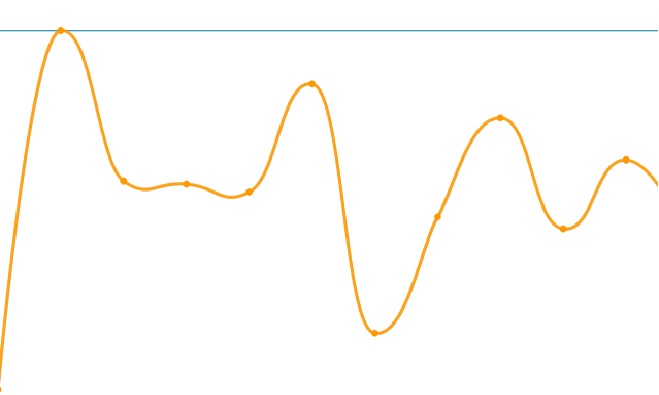 |
| Average X | Calculates the average value of X from the chart data and draws a trendline. | 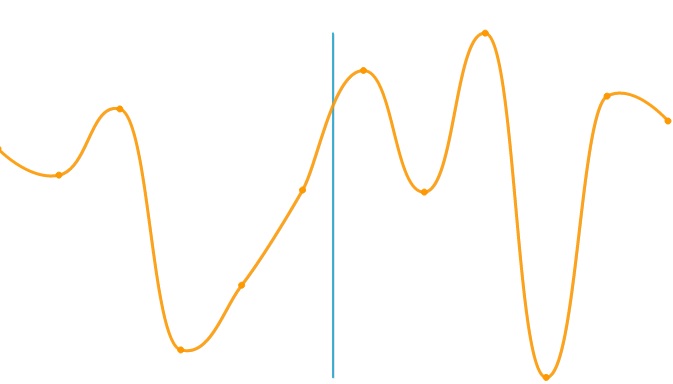 |
| Average Y | Calculates the average value of Y from the chart data and draws a trendline. | 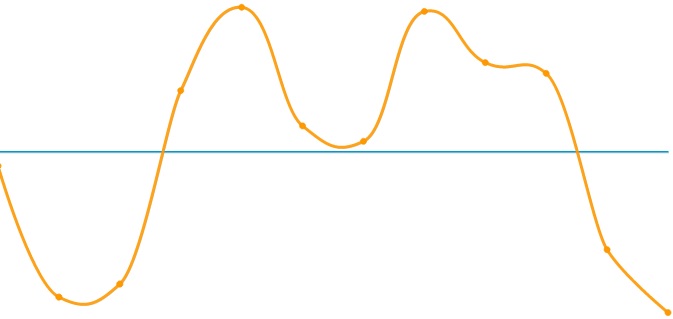 |
TrendLines can be added through the designer, in the source view or even through code. Complete the following steps to add a trendline to a BubbleChart.
These steps assume that you have already added data to the BubbleChart. Please see BubbleChart for ASP.NET Web Forms Quick Start for more information.

Add the following markup within the <SeriesList></SeriesList> tags, to add a trendline to the chart.
| Markup |
Copy Code
|
|---|---|
<cc1:BubbleChartSeries LegendEntry="True" IsTrendline="true"> <TrendlineSeries FitType="Polynom"> <Data> <X> <Values> <cc1:ChartXData StringValue="QTR1" /> <cc1:ChartXData StringValue="QTR2" /> <cc1:ChartXData StringValue="QTR3 /> <cc1:ChartXData StringValue="QTR4" /> </Values> </X> <Y> <Values> <cc1:ChartYData DoubleValue="13" /> <cc1:ChartYData DoubleValue="4" /> <cc1:ChartYData DoubleValue="18" /> <cc1:ChartYData DoubleValue="8" /> </Values> </Y> </Data> </TrendlineSeries> </cc1:BubbleChartSeries> |
|
Add the following code to the Page_Load event, to add a Trendline to the BubbleChart Control.
To write code in C#
// Create new series var seriesTrendline = new BubbleChartSeries(); seriesTrendline.IsTrendline = true; seriesTrendline.Label = "Trendline"; seriesTrendline.TrendlineSeries.FitType = TrendlineFitType.Polynom; seriesTrendline.TrendlineSeries.Order = 4; seriesTrendline.TrendlineSeries.SampleCount = 100; // Add series to the chart this.C1BubbleChart1.SeriesList.Add(seriesTrendline); // Add X DataseriesTrendline.TrendlineSeries.Data.X.Add("QTR1");
seriesTrendline.TrendlineSeries.Data.X.Add("QTR2");
seriesTrendline.TrendlineSeries.Data.X.Add("QTR3");
seriesTrendline.TrendlineSeries.Data.X.Add("QTR4"); // Add Y Data
seriesTrendline.TrendlineSeries.Data.Y.Add(13);
seriesTrendline.TrendlineSeries.Data.Y.Add(4);
seriesTrendline.TrendlineSeries.Data.Y.Add(18);
seriesTrendline.TrendlineSeries.Data.Y.Add(8);
To write code in Visual Basic
' Create new series
Dim seriesTrendline = New BubbleChartSeries()
seriesTrendline.IsTrendline = True
seriesTrendline.Label = "Trendline"
seriesTrendline.TrendlineSeries.FitType = TrendlineFitType.Polynom
seriesTrendline.TrendlineSeries.Order = 4
seriesTrendline.TrendlineSeries.SampleCount = 100
' Add series to the chart
Me.C1BubbleChart1.SeriesList.Add(seriesTrendline)
' Add X Data
seriesTrendline.TrendlineSeries.Data.X.Add("QTR1")
seriesTrendline.TrendlineSeries.Data.X.Add("QTR2")
seriesTrendline.TrendlineSeries.Data.X.Add("QTR3")
seriesTrendline.TrendlineSeries.Data.X.Add("QTR4")
' Add Y Data
seriesTrendline.TrendlineSeries.Data.Y.Add(13)
seriesTrendline.TrendlineSeries.Data.Y.Add(4)
seriesTrendline.TrendlineSeries.Data.Y.Add(18)
seriesTrendline.TrendlineSeries.Data.Y.Add(8)
When you run the project, notice that the trendline appears in the BubbleChart control.
